This post is also available in: Italian
Among the most appreciated areas of Italy, the coastline in Campania surely deserves a very special mention, mostly thanks to its natural and scenic beauty, its ancient villages, several excellent tourist resorts and numberless gastronomic treats, such as the famous “limoncello” and “mozzarella di bufala”. This whole area is divided into the Amalfi and the Sorrento Coast.
The Amalfi Coast, overlooking the Gulf of Salerno, stretches from Positano to Vietri sul Mare. Acknowledged as a World Heritage Site by Unesco, it was described in Boccaccio’s Decameron (1st day, 4th story) as: «(…) It is believed that the marina from Reggio to Gaeta is almost the most delightful part of Italy; very close to Salerno, it is a coastline overlooking the sea, full of small cities, gardens and fountains; not to mention a true wealth of traders and businessmen of all kinds (…)».
The Sorrento Coast , overlooking the Gulf of Naples, covers the area between Sant’Agata sui Due Golfi and Castellamare di Stabia.
Campania, and its coast, in particular, is also rich in large gardens and has a long botanical tradition, with a particular focus on roses, camellias and citrus fruits. Along the two coasts, there are many interesting nurseries, including the six mentioned in the following itinerary. The latter starts in Salerno, a historic town which used to be the Middle Ages seat of the Salerno Medical School, and today, at Christmas, hosts the incredible “Festival of Lights”. The itinerary then reaches Naples and the renowned Island of Ischia. You would need several days to fully enjoy all the enchanted locations along this very itinerary., including gardens, oasis, beaches and spas.
The Nurseries
The map shows the nurseries and other locations included in our suggested itinerary. Distances are also mentioned, in order to make it easier and more practical for you to make your choice and save petrol and time.
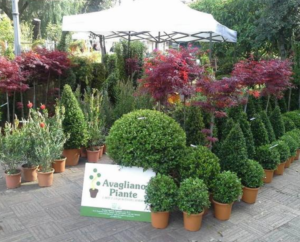
Avagliano Piante, near Salerno: The nursery of Avagliano Plants is not so far from the city of Salerno and customers can find here hedges, bushes, fruit trees, and shaped plants, since the owners are specialized in topiary art. The cultivated species are numerous, such as Buxus ‘Faulkner’, Buxus rotundifolia, Cupressocyparis leylandii, Ligustrum jonandrum, Cotoneaster, Pyracantha.
Distances to other nurseries: 35,5 miles to La Ginestra Nursery – 39 miles to Ruoppo Nursery – 47 miles to Le Rose di Partenope – 68 miles to Strina Nursery.
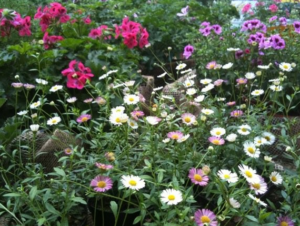
La Ginestra Nursery, in Piano di Sorrento (NA): It is located on the road which from Piano di Sorrento leads to Positano, in front of the Galli islands and the landscape is magnificent. La Ginestra Nursery nursery was created 20 years ago by Maria Rosaria and Giovanna, who love the plants of the Mediterranean scrub. The terracing, on which the nursery is standing, were covered originally by numerous broom trees which gave the name to the business.
The production is focused on the essences of the Mediterranean scrub, particularly on the spontaneous plants, which ornate our walls and coasts: erigeron, trachelium, sedum, bluebells, rosemary, helichrysum, lavender-cotton, creepers…
The owner has also started cultivating hortensias, also an old variety (Hydrangea macrophilla ‘Otakxa’), which has always been present in the citrus groves in the area around Sorrento
Distances to other nurseries: 4,3 miles to Ruoppo Nursery – 43 miles to Avagliano Nursery – 41 miles to Le Rose di Partenope – 62 miles to Strina Nursery.
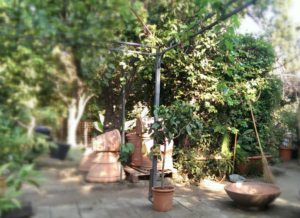
Ruoppo Nursery, in Sorrento (NA): Francesco, Claudio Ruoppo’s great-grandfather, took care of the garden of the counts of Correale (now it is a museum). When they died, he started a small business in the gardening field. Luigi, his son, enlarged the enterprise and started offering flowers and getting passionate about the cures required by the citrus trees of Sorrento. Pia’s father, Claudio, made the family business successful creating a real nursery where plants, flowers, topsoil and vases were sold behind the museum of Correale. Claudio Ruoppo became in a short time also the most requested florist and his nursery is now open to the city. It is possible to find here garden, balcony, ornamental, flowering and indoor plants.
Distances to other nurseries: 40 miles to Le Rose di Partenope – 39 miles to Avagliano Nursery – 4,3 miles to La Ginestra Nursery – 40 miles to Le Rose di Posillipo – 61 miles to Strina Nursery.
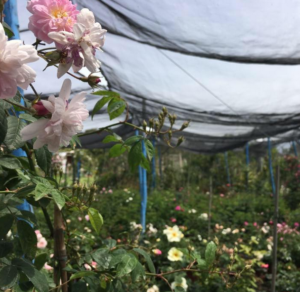
Le Rose di Partenope, in Naples: A young entrepreneur from Campania, Francesco Guercio, has started a new business following his passion for botany and flora. He has created a nursery according to the Neapolitan tradition of the roses, but with a new and modern taste. Stout and blooming plants suitable for any garden and terrace, which can be matched with unusual plants which require few cures.
Francesco will help the customers with the choice of the roses and will advise the clients on all the topics related to design and selling, in order to satisfy their demands.
Distances to other nurseries: 41 miles to La Ginestra Nursery – 40 miles to Ruoppo Nursery – 25,5 miles to Strina Nursery.
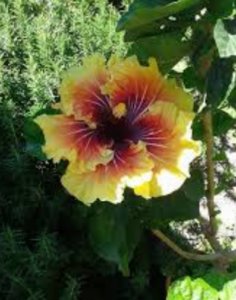 Strina Nursery, in Barano d’Ischia (NA): the nursery, which is located on the top of a hill and is surrounded by a pine grove, features a wide range of unusual and rare plants coming from different parts of the world and capable of growing in our greenhouses or in the open air where the winters are mild.
Strina Nursery, in Barano d’Ischia (NA): the nursery, which is located on the top of a hill and is surrounded by a pine grove, features a wide range of unusual and rare plants coming from different parts of the world and capable of growing in our greenhouses or in the open air where the winters are mild.
Distances to other nurseries: 68 miles to Avagliano Nursery – 62 miles to La Ginestra Nursery – 62 miles to Ruoppo Nursery – 25,5 miles to Le Rose di Partenope – 25,5 miles to Le Rose di Posillipo.
Once you’re back inland, you may want to proceed on our next suggested itinerary: Discovering Nurseries: from Caserta to Avellino (Campania 1), eventually reaching Deserto Rosso Nursery, some 22 miles from Naples.
Gardens, botanical facilities and other attractions along the way
Campania is rich in gardens, botanical facilities, oasis, reserves, etc…
To make the most out of your visit, you should refer to our following recommendations and www.luoghi.italianbotanicaltrips.com.
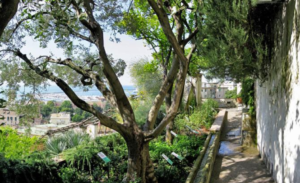
Giardino della Minerva in Salerno: It is a botanical garden located in the ancient part of Salerno, next to the western walls of the medieval town along the Fusandola torrent. It was used during the Middle Age as an education space for the students of Salerno Medical School; for that reason, it is considered as the precursor to modern botanical gardens. More than 200 vegetal species grow inside the garden; they include not only rare species but also the most used during the Medieval times such as healing plants, like the legendary mandrakes, which was thought to have extraordinary virtues, Colocasia esculenta (quoted by Silvatico in 1300) and the Indian ginseng (Withania somnifera).
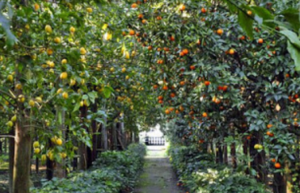
Antica Tenuta il Pizzo, in Piano di Sorrento (NA): Il Pizzo is a historical estate located in the municipalities of Sant’Agnello and Piano di Sorrento, it covers a rocky spur facing the sea, which gives the name to the whole building, on the gulf of “Pecoriello”. The coastal area is rich in holm oaks, oaks, pines, carob trees and strawberry trees. It was created following local traditions to defend the area from northern winds and it has been enriched through time by vegetations of oleanders, agaves and myrtle hedges, which are on a 0,6 mile-long narrow path.

Giardini La Mortella, in Ischia: La Mortella is a garden-museum created by Susana Walton, the wife of the British composer William, at Forio, in the western area of the Ischia island. There are magnolias, Hydrangea, Chorisia speciosa and a Cycadaceae collection. One of the most surprising collections is that of arboreal ferns, including Cyathea cooperi, C. medullaris, Cyathea australis, and the most common Dicksonia anctartica.
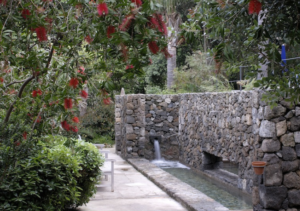
Negombo Park Spa, in Ischia: It is located on the island of Ischia, in the deep bay of San Montano, enclosed between the Vico Mountain and the promontory of Zaro, Negombo’s hydrothermal park is a remarkable example of the integration of landscape, garden, art and thermal waters. It was requested and realised by duke Luigi Silvestro Camerini in 1947. He was an entrepreneur, anti-fascist and great Venetian traveller, who fell in love with Southern Italy after his confinement on the island of Ponza. The park includes 14 marine, thermal, therapeutic pools included in a great botanical-Mediterranean garden; it was designed by the landscaper Ermanno Cascasco. Furthermore, at the end of May, the park hosts the “Ipomea del Negombo” exhibition of Mediterranean plants and flowers.
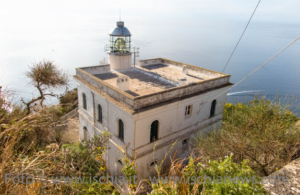
Punta Imperatore Lighthouse, in Ischia: this is the biggest lighthouse in Ischia and it is located among extraordinary vegetation facing the sea, between Panza and Citara Bay. It towers and protects the beach of Citara with its lantern, which can cast a ray of light at more than 160 meters of height. In order to reach the lighthouse of Punta Imperatore, it is necessary to start by following a narrow road from the residential area of Panza and pass through vineyards, vegetable gardens, and villas facing the sea. The sight is breathtaking; it is possible to observe the exterior, inhabited residential area of Forio till the church of Soccorso, as well as the valley and the hills, which cover the area from the seat to the peak of Epomeo Mountain; hawks nests, bushes, wild orchids, strawberry trees (Arbutus unedo), the entire Gulf of Gaeta and the Pontine Islands.
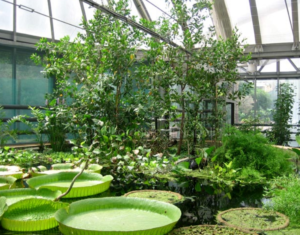
Naples Botanical Garden: The botanical orchard of Naples was founded with a decree of 1807 signed by king Joseph Bonaparte, brother of Napoleon. Nowadays, the total surface of the Botanical Orchard has an extension of 12 hectares on which there are about 25.000 specimens, grouped in collections according to ecological, systematic and ethnobotanical criteria.

Parco Naturale del Cilento,Vallo di Diano e Alburni (Vallo della Lucania, SA): Cilento’s National park, Vallo di Diano and Alburni, was established in 1991; it has an extension of more than 180 hectares and nowadays, it is the widest Italian park. It is delimited by Basilicata, the Sele plain and the Tyrrhenian Sea on the western side, it includes 8 alpine communities and 80 municipalities. The park offers also numerous ancient paths and represents an important hub for the national excursion net along the Southern Appennines.
It has become part of UNESCO’S Heritage of Humanity (together with the archaeological sites of Paestum, Velia and the Charterhouse of Padula), biosphere reserve and it is the first Italian park to become a geopark since there is the so-called “Vallo della Lucania”.
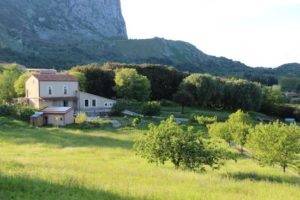
Accommodation
Locanda San Fantino, in the medieval village of San Giovanni a Piro, 3 miles from Scario (featuring a quaint little harbour and the seafront), and not that far away from the wonderful Parco Nazionale del Cilento, Vallo di Diano e Alburni. The latter is a park extremely rich in biodiversities, together with the whole surrounding area.
San Fantino farm and inn is located in the town of San Giovanni a Piro, in Cilento, an area characterised by the presence of nature, fishing villages on the coast and of farmers on the mountains, with a wild coast accessible only on foot and by boat, mountains of 1890 m in the vicinities of the sea, fields, vineyards, olive tree groves and dense forests with Cilento’s National Park, which has been part of Unesco since 1998. The flora of the area has the highest biodiversity in Europe, with more than 170 different species of wild orchids and 90% of wild culinary and therapeutic herbs.
This post is also available in: Italian


Leave a Reply